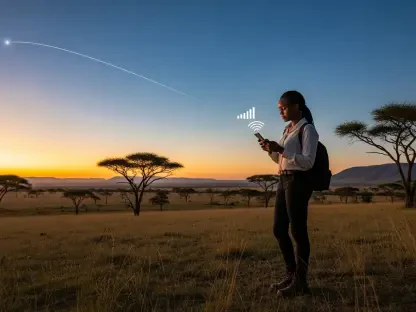Could a single telecom giant redefine the way millions connect across Europe in an era where digital demand surges like never before? Orange, a dominant force in the European telecommunications landscape, stands at the forefront of this transformation with groundbreaking strategies and innovations that are reshaping not just its own path but also setting a precedent for how connectivity and communication evolve across the continent.
This story matters because the telecom sector is the backbone of Europe’s digital economy, influencing everything from smart cities to remote work ecosystems. With economic volatility and intense competition as constant challenges, Orange’s approach offers a window into how the industry can adapt and thrive. The stakes are high, as the decisions made today will impact connectivity for decades, making this a critical moment to examine Orange’s role.
Why Orange’s Strategies Are Turning Heads in Europe
Orange has emerged as a focal point in the telecom world, drawing attention with bold maneuvers that signal a shift in industry dynamics. The company’s involvement in high-profile bidding wars, such as the potential dismantling of Altice France, suggests a calculated push to consolidate power and resources. This isn’t merely a corporate play; it’s a move that could alter the competitive landscape for years.
Beyond acquisitions, Orange’s strategic positioning, including speculation around MásOrange ownership, underscores a keen eye for emerging market opportunities. Such actions reflect a broader ambition to dominate key segments of the European market. Industry watchers note that these decisions could set off a domino effect, influencing smaller players to rethink their own strategies.
The ripple effects of these moves are already visible, with analysts predicting a tighter, more consolidated telecom sector. A recent report from a leading European market analysis firm indicated that mergers and acquisitions in telecom have risen by 15% since last year, with Orange often at the center of these discussions. This trend highlights the company’s role as a catalyst for change across the region.
The High Stakes of Telecom Evolution in Europe
Europe’s telecom industry faces a pivotal moment, caught between rapid technological advancement and unpredictable economic conditions. Companies like Orange must navigate fierce competition while meeting an unprecedented demand for faster, more reliable networks. This challenge extends beyond simple connectivity—it’s about enabling the infrastructure for future innovations like autonomous vehicles and IoT ecosystems.
Moreover, the pressure to secure data in an age of escalating cyber threats adds another layer of complexity. With cyberattacks on telecom networks increasing by 20% over the past two years, according to a cybersecurity study, the need for robust, secure systems has never been greater. Orange’s ability to address these concerns could position it as a leader in safeguarding Europe’s digital future.
The broader implications touch on global competitiveness as well. If Europe’s telecom sector fails to keep pace with regions like Asia or North America, the economic fallout could be significant. Orange’s response to these challenges, therefore, isn’t just a corporate concern but a matter of regional importance, shaping how the continent maintains its standing on the world stage.
Orange’s Bold Steps in Strategy and Technology
Orange is not standing still, pushing boundaries through both competitive strategies and cutting-edge technology. The company’s bid to reshape market dynamics through potential acquisitions like Altice France could redefine resource allocation in the sector. Additionally, ownership discussions around MásOrange point to a deliberate effort to capture new growth avenues in a saturated market.
Financially, Orange demonstrates resilience, with Q3 results this year showing steady revenue growth despite economic headwinds. This stability, achieved through strategic cost management and diversified investments, reflects a model of adaptability that others in the industry might emulate. Such performance provides a buffer to fund ambitious tech projects without compromising operational strength.
On the innovation front, Orange is leading conversations at events like Network X, focusing on open RAN, software-based solutions, and AI-driven systems for scalable networks. Collaborations with the European Space Agency and Thales Alenia Space for satellite communications address urgent needs for resilient connectivity, while advancements in 5G core and passive optical networks pave the way for next-gen infrastructure. However, integrating complex tools like generative AI into enterprise services remains a hurdle, requiring careful calibration to ensure reliability. Geographically, France and Spain serve as key testing grounds, with cities like Paris, Lyon, and Marseille becoming hubs for these pioneering deployments.
Leadership Perspectives and Industry Trends
Leadership at Orange, including figures like Christel Heydemann, Christian Gacon, and Jean-Louis Le Roux, is steering the company through a transformative era with a clear focus on innovation. Heydemann has publicly emphasized the importance of collaboration, a sentiment that resonates with industry feedback from forums like Network X. There, experts consistently highlight adaptability as a cornerstone for success in today’s volatile market.
Industry reports from recent telecom summits reinforce this view, noting that failure to adopt technologies like open RAN or AI could leave companies trailing behind. One analyst at a major conference remarked, “The telecoms that hesitate on innovation risk obsolescence within a decade.” Orange’s proactive stance in competitive bidding and tech adoption aligns with this urgent call for forward-thinking strategies.
This alignment isn’t coincidental but a deliberate effort to shape trends rather than follow them. By positioning itself at the intersection of collaboration and cutting-edge technology, Orange is crafting a blueprint for others. The consensus among industry voices is clear: adaptability paired with strategic vision, as demonstrated by Orange’s leadership, is the path forward in a rapidly shifting landscape.
What Orange’s Path Means for Telecom’s Future
Orange’s trajectory offers practical lessons for stakeholders and consumers navigating the evolving telecom sector. Collaborative models, as seen in Orange’s partnerships for satellite and 5G advancements, suggest that cross-sector alliances can speed up progress and distribute costs effectively. Businesses looking to innovate should consider similar partnerships to amplify their impact.
Adopting scalable technologies like open RAN, a priority for Orange, can help future-proof networks against rapid shifts in demand and capability. This approach ensures long-term sustainability, a critical factor as data usage continues to climb—projected to increase by 30% annually through 2027, per industry forecasts. Companies must prioritize flexibility to stay relevant.
Targeting high-potential markets like France and Spain, as Orange has done, can maximize visibility and growth. Additionally, balancing innovation with practicality, such as cautiously integrating AI while refining its application, ensures reliability for end users. These strategies provide a roadmap for others, inspired by Orange’s calculated yet daring approach to industry challenges.
Looking back, Orange’s journey through strategic acquisitions, technological breakthroughs, and market focus in key European regions paints a picture of resilience and foresight. The company’s efforts to balance innovation with stability offer a model for others in a turbulent sector. Moving forward, the telecom industry should take note of these lessons, focusing on partnerships and scalable solutions to address upcoming challenges. Embracing adaptability, as Orange has done, remains the key to unlocking a connected future that benefits all stakeholders.









